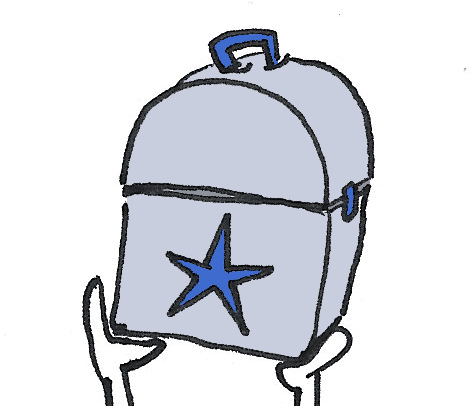The Role of Cannabis for Optimal Health and Well being
The Vision
The Challenge:
Cannabis has been shown have potential to relieve many distressing symptoms, to treat various medical conditions and to enhance overall well being. Additionally it may lead to a number of long lasting side effects and pathology for the individual and society.
The political system has criminalized the use of cannabis leading to a number of severe consequences:
1. Lack of research that can provide treatment for major disorders
2. Criminalizing and incarcerating hundred of thousands of citizens
3. Support a corrupt political and justice system, leading to distrust of government and its potential for responding to the public good
4. Example of the potential power of citizens organizing at the grass root level to impact legislation.
Number of Americans: (18- 90 year old)
320 million
Number of Americans who report trying cannabis
Number of Americans who are dependent on cannabis
Number of Americans who have died as a result of cannabis use
Total costs for healthcare services for each person in this group
$ per year
Total expenditures on research related to the potential medial use of medical cannabis
$0 billion
The expenditures of the federal government to identify adverse effects of medical cannabis
The number of individuals whose livelihood is dependent of the criminalization of cannabis
The healthcare goals for individuals using medical cannabis:
1. Staying alive
2. Minimizing side effects
3. Optimal function and well being healthy 4. Flourishing
The vision
By September 2020
-
every individual who experiences medical conditions and symptoms that prevent them from optimal health has access to and is able to receive evidence based, best practice informed treatment that improves their wellbeing in outcomes that matter for them.
-
No citizen is subjected to the criminal justice system for using (Possessing) cannabis.
The healthcare concerns of the individual suffering with medical conditions that may be improved by cannabis.
Autonomy, rehabilitation, limiting progression, accommodating environment, caregiver support
Goals for Health Care
Living win a state of optimal well being (salutogenesis)
Optimal care for individual suffering with condition for which medical cannabis may be beneficial.
Typical Example
Individuals suffering with chronic pain associated with peripheral neuropathy
Example: Cannabis and Pain
Pain is a multidimensional problem ranging from discomfort to agony and affecting physical, emotional, and cognitive function as well as interpersonal relationships and social roles.
In this section you will learn more about pain, its causes and learn of our vision for optimal evaluation and treatment of acute and chronic pain:
1. Overview of pain
2. Causes of pain
3. Evaluation of pain
4. Treatment for pain
5. Resources for optimal choice
The burden of dealing with unremitting pain can be devastating to a patient's psychological well-being and can negatively affect their ability to maintain gainful employment or achieve meaningful professional advancement. It can affect relationships with spouses and significant others; may limit engagement with friends and other social activities; and may induce fear, demoralization, anxiety, and depression.
Features of Optimal Healthcare
Access:
Preferably the person who is chronically ill will have a primary care doctor or if indicated a specialist who will coordinate their care. Specialists will be available for consultation in person or through other means to address specific problems. The person will have choice of providers including doctors, hospital, nursing facility, local pharmacy, or certified health club. Emergency Medical Services that can provide immediate care and transfer to appropriate level of care. Home evaluation and treatment available promptly; 24/7 rapid response to home for crises Equal access to health care services tailored to situation. Administrative needs are minimal.
Quality Health Care:
Patient Centered (No Helplessness or Unjustified Routines): Care is patient centric and is provided with dignity, cultural sensitivity and respect for the person. Information is provided in age and education level appropriate manner. Advance care planning consistent with patient’s wishes; resolution of family issues; support of family caregivers. Informed and shared decisions reflecting parents’ values (constrained by legal limits). Lifestyle reflecting informed decisions; self-monitored care; patient and family education.
Safe (No Harm): Care that is provided will be safe from errors. This will be of particular challenge when there are changes in the venue of care. For example the person is in need of hospitalization and the medications they take are not given as ordered.
Effective (No Needless Failures): Specific outcomes will be measures and adjustment in the services made. Recommendations from national agencies and groups will be followed. Care that is effective for the problems experienced by the person suffering with a chronic condition. Evidence-based secondary and primary prevention and rehabilitation. Government and professional association guidelines are readily available and are transparent. Home-based care; nutritional support; reliable facility care when needed; support for caregivers; appropriate preventive services.
Efficient (No Waste): For brief acute episodes, diagnosis is made and care provided in timely efficient manner. A treatment plan is formulated according to an informed dialogue with the person or their legal representatives. Government and professional association guidelines are readily available and are transparent. Regulatory agencies oversee quality of services, and advertising to consumers.
Timely (No Needless Delays): Evaluation and treatment for brief acute episode is available promptly. Convenient and responsive scheduling, no waiting for health care services; immediate access to results of tests; immediate access to clinical guidance and other information; timely education and support; Little waiting for health care services; adequate notice of expected events; convenient and responsive scheduling; immediate access to test results, clinical guidance, and other information; short time to diagnosis and treatment for positive screens and worsening conditions.
Equitable (No Unjustified Variation): Care is provided universally with no bias due to personal characteristics. equal opportunity for important treatments; no bias due to personal characteristics. Regulatory agencies oversee quality of services, and advertising to consumers.
Coordination of Care:
Care is patient centric and revolves around the patient and their doctor (clinician). Care continuum management across multiple providers. Public health services that have provisions for early identification of community trends. Education regarding risk factors and practical ways to avoid them. For identified problem and secondary prevention, care is coordinated regionally, through medical records, supported by privacy provisions. Care in its various levels is coordinated to achieve best outcomes and limit errors and cost. For identified problem and secondary prevention, care is coordinated regionally, through medical records, supported by privacy provisions. Public health provisions for early identification of community trends.
Cost:
Basic cost for health care services, treatments and support services are covered fully. In addition where appropriate lifestyle related interventions, screening and prevention activity are also covered. The cost of acute hospitalization, nursing facility care, long term care, where medically indicated is covered.
Coverage:
The coverage is universal and not dependent on the condition, stage of life or ability to pay. Supplemental insurance may be purchased. Plans may compete of riders for additional services. Employers may also provide additional services. Coverage for education of caregivers will be provided.
Innovation:
The goal of innovation is to improve quality of the person thorough achieving and maintaining optimal function. Personalized medicine, identified early susceptibility based on genetics, technological tools to assure compliance with treatments and ability to monitor response to interventions. Utilization of personal medical records that can automatically provide reminders of needed screening, immunizations and monitoring response. A personal record of treatments for acute episodes including medications and side effects that is paper or electronic based. It would include new treatments, diagnostic procedures, new services, new monitoring tools new delivery systems and concepts. Updates on research and innovation quickly reaching the point of care and the person who will benefit from it.
-
Computerized physician order entry with decision support
-
Pain management that is patient specific
-
Digital enhanced educational content
-
Apps to support recovery and early recognition of side effects
-
Information and transparency for decision making about treatment options
-
Monitoring devices for opioid overdose
-
Electronically available health care plans
-
Advance care plans available
-
Electronically 24/7 access
-
Secure message capability
-
Available in language and level of education of choice
-
Real-time home monitoring devices; e-reminders for screens and monitoring
-
Longitudinal electronic health records and personal health records

Ecosystem and Stakeholders

Guidelines and Best Practice

Citizen Briefs
The Cannabis Rx My Personal Health Manager
The Medical Cannabis Treatment Checklist
Monitoring Treatment
Resources


Medical Cannabis influence across the life course



